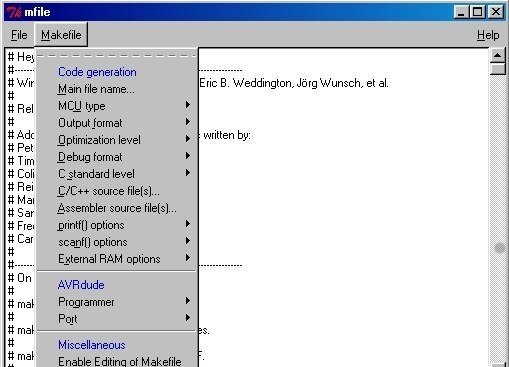Using Winavr To Program Arduino


Using the Arduino libraries for regular AVR code. The alternative is to code my Arduino Uno using the AVR-GCC/g++. While programming using a simple text.
Using WinAVR on Arduino. Log in or register to post. How do I program either chip inside the arduino, using WinAVR? How can I program the breadboard using. The procedure to upload sketches into standalone Arduino is similar with session 1. Select “USBasp” from the Tools >Programmer menu and choose “Upload using. Jan 13, 2011 How can i use WINAVR to program my ARDUINO UNO? Of the board they want us to buy.only problem is i dont know how to program it without using the ARDUINO IDE. Theories Of Developmental Psychology Patricia Miller Pdf File.
This article first appeared in. A microcontroller is a self-contained, but very limited computer — halfway between a computer and a component. The top reasons to integrate a microcontroller into your projects are connectivity and interactivity, and one easy way to get your microcontroller talking with the outside world is standard asynchronous serial I/O. Many devices can communicate this way, from wi-fi routers to GPS units to your desktop or laptop computer. Getting comfortable with serial I/O makes debugging your AVR programs much easier because the AVR can finally talk to you, opening up a huge opportunity for awesome.
In this Skill Builder, we’ll set up two-way communication between an AVR microcontroller and your computer. Your computer will command the AVR to blink an LED, then the AVR will open a web page of your choice in a browser at the push of a breadboarded button using serial I/O.
You’ll need the following software: • Project code Free download from, includes C code for the AVR, Python code, and a Makefile • AVRDUDE and the AVR-GCC compiler Free downloads for: • Mac: AVR CrossPack, • Linux: Open terminal and type: sudo apt-get install avrdude avrdude-doc binutils-avr avr-libc gcc-avr • Windows: WinAVR,. Select the option to add AVRDUDE to your path during the install. • pySerial package from for serial communication in Python Asynchronous Serial Communications — A Quick Technical Overview Computers like to talk to each other in binary: ones and zeros. A simple way to send these binary bits between devices is to connect them together with a wire, and let a high or low voltage on the wire denote a one or zero. Sending bits one at a time like this is serial communication because the bits are sent in series, one after the other.
For asynchronous serial communication (above), there is no common clock signal between the two devices, so to interpret a stream of voltages, each device needs to know how fast the bits are being sent: the baud rate. Atmel’s megaAVR family of AVRs (the ATmega series) have a built-in universal synchronous and asynchronous serial receiver/transmitter ( USART for short) hardware peripheral that takes care of all of the hard bits — setting and reading voltages on the serial communication lines at just the right times. Using the USART is not hard: We configure the baud rate, turn the transmitter and receiver sections on, and then feed it data. The USART hardware takes care of the rest. Configuration The AVR chips set the baud rate by taking the CPU clock and dividing it down to the right speed.
Your main job, in configuring the chip, is to figure out the correct division factor. The AVR USART hardware samples each bit multiple times to make sure that it’s reading a consistent voltage level. In particular, it has two modes: one where it samples 16 times per bit (“normal” mode) and another where it samples 8 times per bit (“double speed” mode). So you’re going to divide the CPU speed by 16 and 8 times the baud rate respectively, and then use that result to set the USART timing clock divider. There are two more catches, though. First, you need to subtract 1 from the result. This is because the AVR’s counter starts counting with 0 rather than 1.